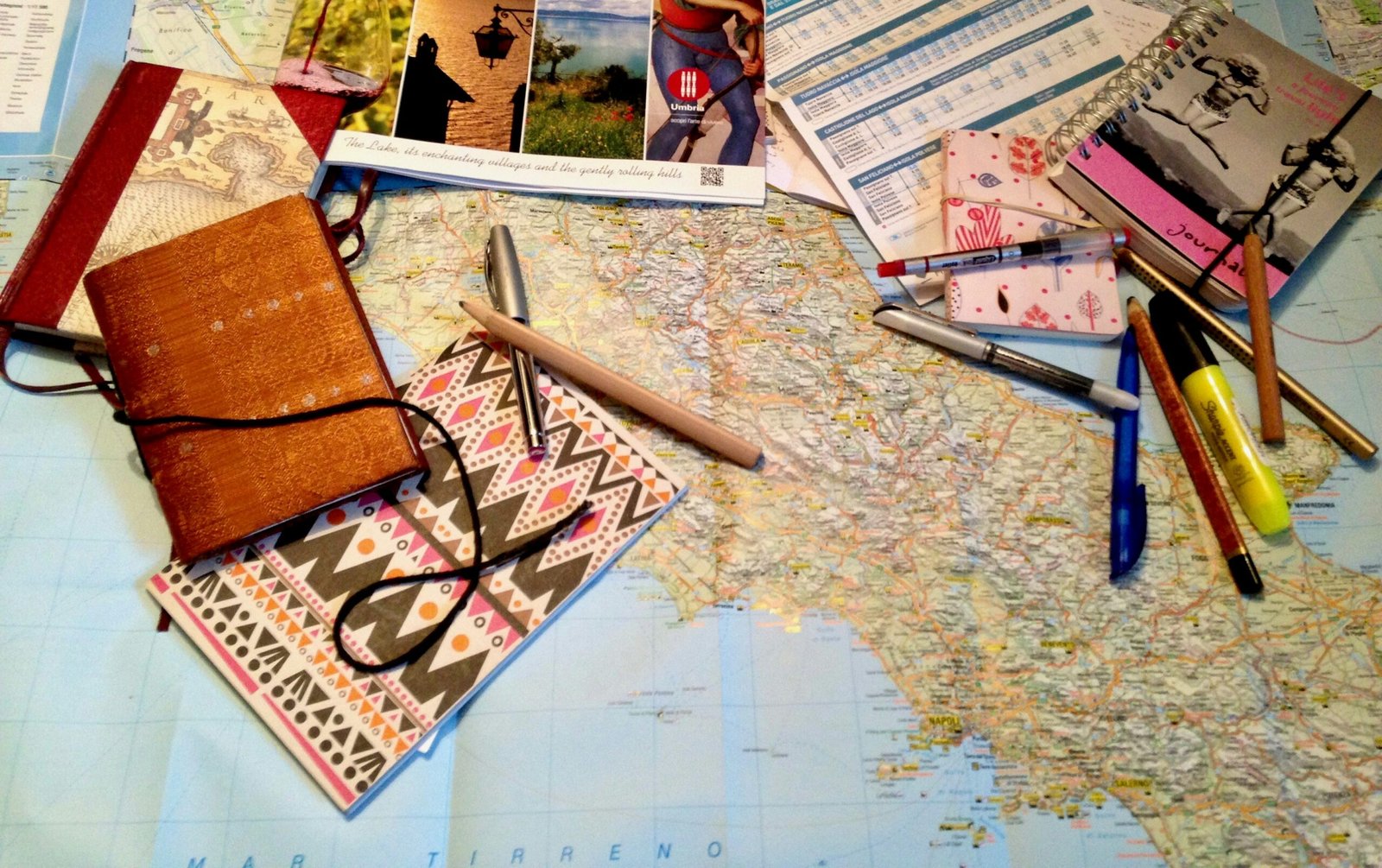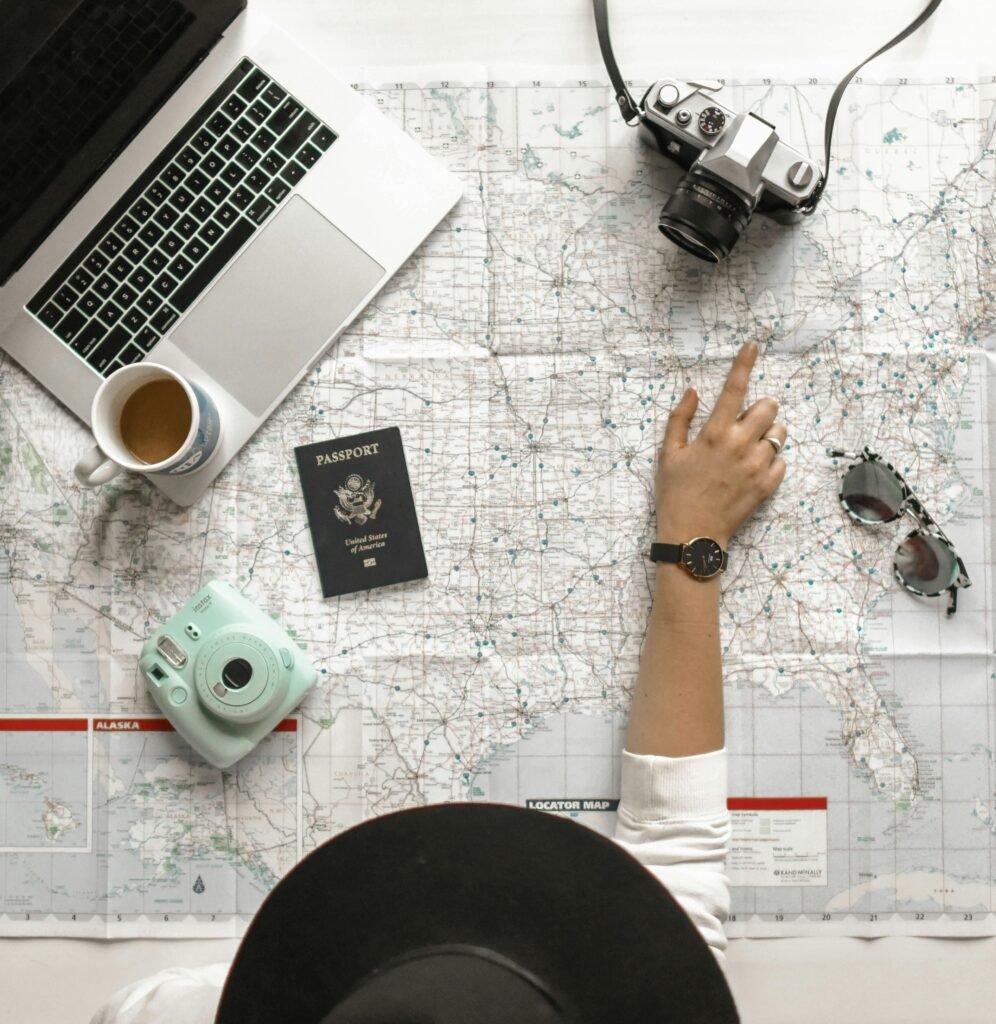Finding Travel Inspiration
In the ever-expanding realm of travel, finding inspiration is an essential step in crafting a memorable journey. A multitude of sources can stimulate this creative process, ranging from digital platforms to personal interactions. Websites dedicated to travel, such as TripAdvisor and Lonely Planet, provide a wealth of information, including destination guides, traveler reviews, and photographic insights, helping individuals visualize their upcoming adventures.

Social media platforms, particularly Instagram and Pinterest, have transformed how we collect and share travel inspiration. Through curated feeds filled with breathtaking images and captivating stories, users can explore destinations they might not have previously considered. Hashtags related to travel can unveil hidden gems and unique experiences tailored to diverse interests. By searching terms that resonate with one’s own travel style—be it adventure, relaxation, or cultural immersion—travelers can compile potential itineraries or dream destinations.
Moreover, travel blogs continue to serve as invaluable resources for inspiration. Many bloggers share personal narratives imbued with cautionary tales and newfound wisdom, often including tips on achieving a unique perspective on well-known locales. Engaging with these platforms fosters a sense of community while also granting insight into the realities of various destinations.
Personal recommendations remain one of the most authentic sources of inspiration. Friends and family often share their travel experiences, highlighting particular aspects that might align with one’s interests. Engaging in discussions about previous travels can unveil exciting opportunities, prompting one to consider a destination that hadn’t crossed their mind before.
To consolidate ideas and potential destinations, maintaining a travel inspiration journal can be particularly useful. This journal can serve as a repository for notes, sketches, and clippings, creating a personal archive of inspiration that may ignite future travel plans. By combining information from diverse sources, aspiring travelers can discover destinations that resonate deeply with their unique travel preferences.
Choosing the Perfect Destination
When it comes to planning a trip, the first and perhaps most crucial step is selecting the perfect destination. This aspect of travel planning can significantly influence the overall experience, and it requires careful consideration of several factors. A traveler should begin by evaluating their budget, as this will help determine feasible options. Some destinations are inherently more expensive than others, so understanding financial limits is essential.
The time of year also plays a vital role in destination selection. Seasons can affect not only the climate but also the cost of travel and accommodation. For instance, visiting a location during its off-peak season can yield substantial savings and a more serene experience since there are generally fewer tourists. Additionally, researching local events, festivals, or holidays can provide insight into the best times to experience a destination fully.

Personal interests should also be a priority when choosing a destination. Consider the type of activities that one enjoys, whether they be cultural experiences, outdoor adventures, or culinary explorations. It is helpful to create a list of interests and seek out locations known for those specific attractions. Reading destination reviews and recommendations can further aid in assessing how well a place aligns with one’s preferences.
After assessing these factors, travelers may start to shortlist potential destinations. This process often involves creating a comparison chart that highlights the pros and cons of each candidate. Such an approach enables individuals to narrow down options systematically. By weighing elements like climate, cultural significance, accessibility, and available activities, one can make a more informed decision that promises an enjoyable trip experience.
Researching Destination Highlights
Conducting thorough research on your chosen travel destination is an essential step in ensuring a smooth and enjoyable trip. When embarking on this research process, one should prioritize gathering information about local attractions, activities, culture, and cuisine. Each of these elements plays a vital role in enhancing the overall travel experience and offers insights into the unique aspects of the destination.
One reliable resource for uncovering destination highlights is travel guides. These guides often provide extensive details about popular landmarks and hidden gems, as well as information on local customs and traditions. Additionally, they tend to feature recommendations for restaurants, ensuring travelers can enjoy the local cuisine. Consider investing in both print and digital editions of reputable travel guides, such as Lonely Planet or Frommer’s, which regularly update their content to reflect current trends and changes.
Furthermore, travel forums and community platforms, such as TripAdvisor and Reddit’s travel subreddits, can be invaluable for firsthand accounts from fellow travelers. These platforms facilitate discussions about various destinations, allowing users to exchange tips, insights, and experiences. Travelers can benefit greatly from this shared knowledge, as it often highlights lesser-known attractions that may not be included in standard travel guides.
In addition to traditional resources, mobile travel applications can enhance one’s research experience. Apps like Google Maps or Airbnb not only help in navigating a destination but also provide recommendations based on user reviews. Utilizing these applications can streamline the planning process, allowing travelers to create an itinerary that perfectly balances sightseeing, cultural immersion, and gastronomic delights.
Overall, thorough research on destination highlights allows for a well-rounded understanding of the location, ensuring that your trip is fulfilling and memorable. Engaging with various resources will facilitate a deeper appreciation of the culture, activities, and culinary offerings inherent to your chosen destination.
Budgeting for Your Trip
When planning a trip, one of the most crucial steps is budgeting, which involves estimating the costs for various trip components, such as flights, accommodations, meals, activities, and transportation. A well-structured budget ensures that your travel plans are feasible and helps you avoid overspending.
Start by determining your destination and the duration of your stay. Research the average flight costs to your chosen location. Websites and resources dedicated to travel can provide insights into fluctuating airfares. Utilizing fare comparison tools can help you identify the best deals. Once you have a general idea of flight prices, allocate a portion of your budget to transportation options at your destination, such as public transit, rental cars, or ride-sharing services.
Next, consider accommodations. Whether you prefer hotels, hostels, or alternative lodging options like Airbnb, determining your nightly rates is essential. Compare options and read reviews to find budget-friendly choices that meet your comfort level. Set aside a budget for meals, keeping in mind that dining out can be expensive. To save money, consider purchasing groceries or utilizing local markets, where you can prepare some meals.

Activities and excursions can rapidly increase your trip costs. Research the must-see attractions, and look for any available discounts or package deals. Many cities offer travel cards that provide access to multiple attractions at a reduced price. This can be an effective way to save while maximizing your experience.
It is important to set a realistic budget that accounts for both expected and unexpected expenses. Building a cushion into your budget for emergencies or spontaneous activities will grant you peace of mind during your travels. By carefully planning and being mindful of your spending, you can ensure that your travel experience is both enjoyable and financially responsible.
Booking Flights and Accommodations
The process of booking flights and accommodations is a crucial phase in trip planning that requires careful consideration. Timing your bookings can significantly influence travel costs, thus ensuring you capitalize on the best prices. Many travelers overlook the golden window for booking flights, which typically ranges from three to six months in advance. Conversely, last-minute bookings can sometimes yield good deals, but this is generally riskier and not always advisable for popular destinations.
Utilizing comparison websites can simplify the booking process by allowing you to compare different airlines and lodging options side by side. Platforms such as Kayak, Skyscanner, or Google Flights are invaluable tools as they aggregate diverse flight options, presenting user-friendly interfaces that facilitate swift decision-making. Similarly, for accommodations, websites like Booking.com, Airbnb, and Expedia provide insights into various lodging types, helping travelers weigh the pros and cons of hotels, hostels, and vacation rentals.
When assessing lodging options, factors such as location, price, amenities, and guest reviews become paramount. Hotels are often favored for their services and facilities, whereas hostels can present budget-friendly choices that foster social interaction. On the other hand, vacation rentals offer a home-like environment, which can be beneficial for families or groups seeking more space. Each option comes with its unique advantages, and the choice largely depends on personal preferences and travel objectives.
Flexibility with travel dates significantly enhances your ability to secure better rates. Flying mid-week, for example, or adjusting your stay to avoid peak tourist seasons can often translate into more affordable fares. Additionally, some airlines and accommodation providers offer price alerts that notify travelers of changes in rates. By adopting a strategic approach to booking flights and accommodations, you can ensure a more enjoyable and cost-effective travel experience.
Creating a Daily Itinerary
Designing a daily itinerary for your trip is a crucial step that ensures a balance between sightseeing and relaxation. A well-structured daily plan allows travelers to make the most of their time while still enjoying the spontaneity that travel has to offer. Begin by evaluating your destinations and pinpointing key locations that align with your interests. Consider not only the attractions you wish to visit but also how they relate to one another in terms of proximity, which can influence your daily schedule.
When establishing your itinerary, it is essential to take into account the opening hours of attractions. Certain museums, parks, or landmarks may have specific days of operation or hours that can affect your visit. By prioritizing your must-see locations based on these schedules, you can avoid unnecessary stress and better plan your day. It is advisable to group activities by location; this minimizes travel time and makes for a more enjoyable experience.
While a detailed plan can be beneficial, it is equally important to incorporate flexibility into your itinerary. Allocating specific times for relaxation, such as leisurely lunches or coffee breaks, allows for moments of downtime that can enhance your overall experience. This flexible approach gives you room to adjust your plans if an unexpected opportunity arises or if you simply wish to stay longer at a particular place. Furthermore, introducing buffer time between activities can help mitigate the pressures often associated with adhering to strict schedules, thereby fostering a more enjoyable travel experience.
In essence, the creation of a daily itinerary involves a careful balance of prioritizing must-see experiences while also allowing for relaxation and spontaneity. This approach not only maximizes your time but also ensures a pleasurable travel adventure.
Packing Smart and Light
Packing efficiently is a crucial aspect of any travel experience. It can significantly impact the comfort and enjoyment of your trip. A well-planned packing strategy not only saves space but also ensures that you have everything you need at your fingertips. To begin, consider the type of luggage that best suits your journey, whether it be a suitcase or a backpack. A suitcase may offer more storage space and organization, while a backpack provides the flexibility necessary for navigating airports and uneven terrain.
When selecting your clothing, aim for versatility. Choose items that can be mixed and matched to create various outfits for different occasions. For instance, lightweight, wrinkle-resistant fabrics are ideal, as they can easily transition from day to evening wear. Additionally, consider layering options that allow you to adapt to varying climates, such as packing a light jacket or a shawl that can serve multiple purposes. A general guideline is to select a color palette that facilitates easy pairing, thereby minimizing the number of shoes and accessories needed.
A packing checklist can further streamline the preparation process. Essential items should include travel documents, toiletries, and a first aid kit. Don’t forget to account for the specific activities planned during your trip. For example, if you anticipate outdoor adventures, pack appropriate gear and clothing that will cater to those needs, while also leaving room for leisure activities. Balancing your packing list with your itinerary can help ensure that you are prepared for all experiences without overloading your luggage.
In essence, packing smart and light is about anticipating your needs and selecting items that provide functionality without compromising comfort. By carefully curating your selections and utilizing efficient packing techniques, you can enhance your overall travel experience and enjoy the journey ahead.
Staying Organized Pre-Trip
Preparation is a crucial aspect of the travel experience, and staying organized before embarking on a trip can significantly enhance the overall journey. To ensure a smooth and enjoyable adventure, utilizing various tools and methods is essential. Travel apps have emerged as formidable allies in this realm, allowing travelers to manage their itineraries conveniently. Applications such as TripIt enable users to consolidate their flight details, hotel bookings, and itinerary changes, all in one accessible location. This streamlining prevents the frustration often associated with misplaced documents or forgotten reservations.
In addition to mobile applications, traditional methods like spreadsheets can also be beneficial. Creating a travel spreadsheet allows for structured tracking of vital information, including flight times, accommodation details, and activities planned at the destination. This format can be customized to suit individual preferences, offering the flexibility to add or remove sections as necessary. Wildly available, such spreadsheets serve as comprehensive repositories of information, leading to a more organized pre-trip phase.
Another effective tool is the checklist. Compiling packing lists, reservation confirmations, and safety essentials ensures nothing is overlooked. By itemizing tasks, travelers can engage in systematic preparation, mitigating the risk of last-minute surprises. Regularly reviewing these checklists fosters a sense of preparedness, instilling confidence in the trip ahead.
Moreover, confirming reservations before the departure date plays a pivotal role in maintaining organizational integrity. Whether it involves verifying flight details, hotel check-ins, or activity bookings, this step ensures that travelers can address potential issues before they arise. Setting contingency plans, such as alternative accommodations or transportation options, further enhances readiness, allowing for a more relaxed travel experience. By employing these organizational strategies, individuals can immerse themselves in their travel aspirations with greater assurance.
Enjoying the Journey: Final Thoughts
Traveling is often regarded as a doorway to new experiences, cultures, and perspectives. However, it is essential to recognize that the journey begins far before the actual departure date. As I reflect on my own travels, I realize that the planning phase is just one part of a larger narrative that unfolds through exploration and spontaneity. Through careful organization and research, I have frequently discovered captivating destinations that suit my interests and budget. Yet, it has been those unplanned moments—lost in a bustling city or sharing a meal with locals—that have truly enriched my travel experiences.

Embracing the unexpected can lead to some of the most memorable adventures. For instance, during a trip to Italy, I had meticulously planned my itinerary to include visits to renowned landmarks. However, it was a chance encounter with a street performer that opened the door to a hidden café, where I had the best gelato of my life. This experience highlighted the importance of remaining flexible and open to new experiences that arise along the way. Indeed, while having a robust travel plan can act as a guide, the true essence of travel often lies in its unpredictability.
Furthermore, I encourage travelers to engage with their surroundings fully. This might include participating in local traditions, learning basic phrases in the native language, or simply striking up conversations with fellow travelers. Each interaction enhances the journey, creating deeper connections and fostering a more profound appreciation for diverse cultures. In essence, while preparation and planning are vital for a successful trip, the ability to adapt and cherish the moments that emerge unexpectedly is what ultimately transforms a journey into an unforgettable adventure. Make the most of your travel experiences by combining thoughtful planning with a spirit of curiosity and spontaneity.



